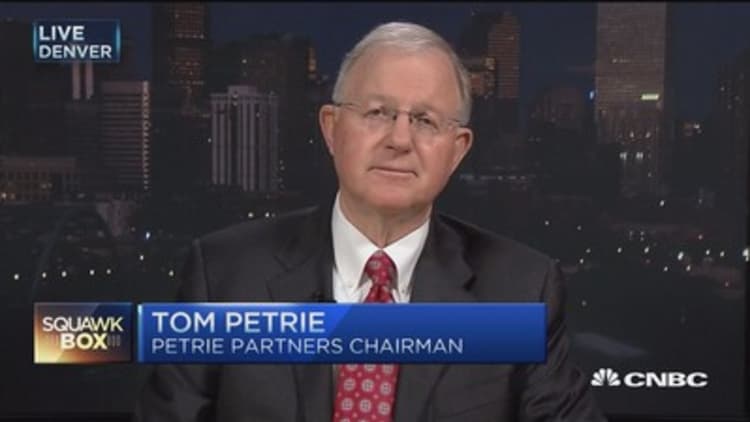
One of the biggest factors in oil markets next year will be the impact of capital spending cuts on crude production, the chairman of energy-focused investment banking firm Petrie Partners said Wednesday.
U.S. crude stockpiles have reached historic highs and inventories around the world are rising as oil production remains strong in the face of declining commodity prices.
But drillers around the world — and particularly in the United States — have slashed capital spending in order to offset declining revenues, creating the expectation that new production will not keep pace with declining output in existing wells.
"The embedded [production] declines from the withdrawal of capital spending really could kick in, I think, in the course of 2016. When that happens, that's when you'll see a real change in inventory draw," he told CNBC's "Squawk Box."
Petrie sees evidence of a global petroleum and liquids output decline on the order of 4 million to 5 million barrels per day in the second half of 2016, and said production cuts will become a "big factor" beyond that. He projected oil prices would bottom at $31 to $33 per barrel.
On Tuesday, U.S. crude settled at $37.51, its lowest close since Feb. 18, 2009. It fell as low as $36.64 during the session.
Oil markets are currently oversupplied with about 1.5 million barrels per day as OPEC members maintain output in a bid to defend market share, and as U.S. and Russian production largely holds up.
Petrie, who has advised top oil exporter Saudi Arabia, said he believes the Saudi-spearheaded OPEC policy is meant to exert pressure on U.S. shale oil producers, address high crude output in Russia, and respond to the United States cooperation with Iran to reach a deal on the Persian country's nuclear program that would lift long-running international sanctions.
Iran's leaders have said they plan to bring 500,000 bpd to markets as soon as possible, and they anticipate reaching 1 million bpd. Iran is Saudi Arabia's primary regional adversary.
Saudi producers have some of the lowest break-even drilling costs, but the country depends on oil revenue for the majority of its budget. Saudi Arabia's leaders have begun drawing down foreign reserves and borrowing money to cover a deficit that is projected to reach $19.5 billion in 2015 by the International Monetary Fund.
Petrie said the Saudis are conservative and will likely try to avoid more than halving their foreign reserves.
The nation has burned through about $91.5 billion of its assets, reducing total foreign reserves from a peak of $746 billion last August to a still-healthy $654.5 billion in September, according to the IMF.




